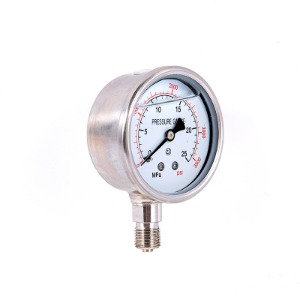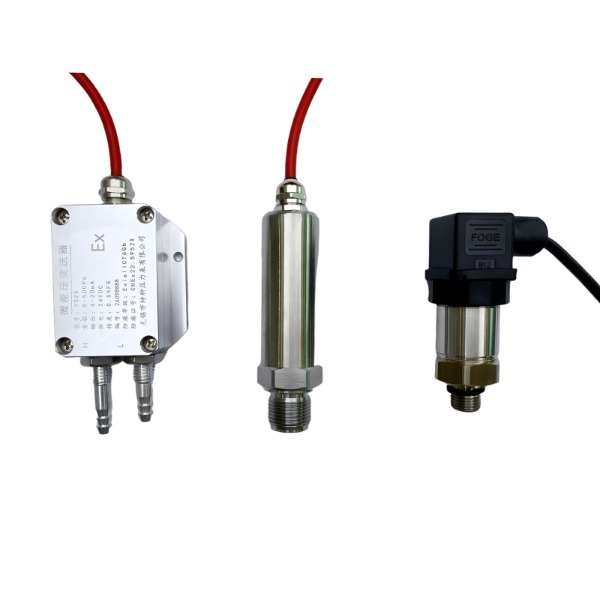YEB series stainless steel diaphragm pressure gauge
Cat:Pressure Gauge
◆ Model:YEB60 YEB100 YEB150◆ Use: This series of instruments are suitable for measuring the low micr...
See DetailsPressure sensors and pressure gauges are both devices used for measuring pressure, but they differ significantly in terms of function, output method and application scenarios:
Core functions are different
·Pressure gauge: Its main function is to visually display the pressure value. It enables users to directly read the pressure level through indicators, digital screens, etc., and it falls under the category of "display equipment".
·Pressure Sensor: The core function is to convert pressure signals into electrical signals (such as voltage, current). These signals themselves do not directly display numerical values. They need to be processed and displayed in conjunction with devices such as meters, PLCs, and computers, and it belongs to the category of "signal conversion equipment".



Different output methods
· Pressure Gauge: The output of the pressure gauge is the visualized pressure value (such as MPa, KPa), which is directly readable by the user.
·The output of the pressure sensor is an electrical signal (such as 4-20mA current or 0-5V voltage), which is mainly used for signal transmission in automated control systems.

Accuracy and sensitivity
· Pressure gauge: Low accuracy (typically 1% to 2.5% of full scale), limited by mechanical structure, and has a slow response.
·Pressure sensor: Usually has higher accuracy (up to 0.1% FS or higher), fast response speed, and is suitable for dynamic pressure measurement.
Different application scenarios
·Pressure gauge: Primarily used in scenarios where direct manual monitoring is required, such as pressure indication on pipelines and gas cylinders, as well as manual readings in laboratories.
·Pressure sensor: Primarily used in automatic control or data acquisition systems, such as pressure closed-loop control in industrial production lines, water pressure monitoring in smart homes, and oil pressure sensors in automotive engines, etc. It needs to work in conjunction with other devices.
Other differences
| Peculiarity | Pressure Sensors | Pressure Gauge | |||
| Vibration resistance capability | Requires an external power source | No power supply required (mechanical type) | |||
| Vibration resistance capability | Strong (electronic component fixation) | Weaker (mechanical components are susceptible to vibration) | |||
| Maintenance complexity | Higher (requiring calibration, circuit maintenance) | Low (with a simple mechanical structure) | |||
| Cost | Higher | Lower |
How to choose?
·Select pressure sensors: These should offer remote control, high precision, or automated control.
·Select pressure gauge: For local direct reading only, when budget is limited, or in harsh environments (such as high temperature and strong corrosion)
In some scenarios, the two can be used together (for example, using a pressure gauge as a backup at the site, and the sensor for remote transmission)